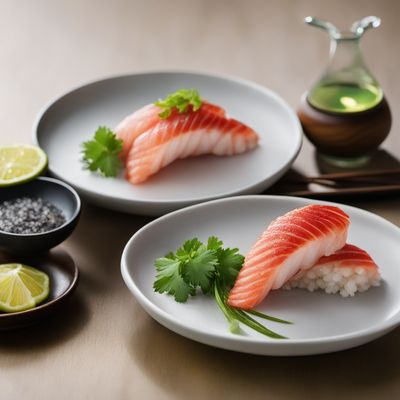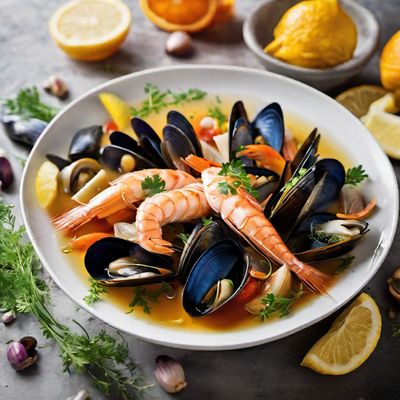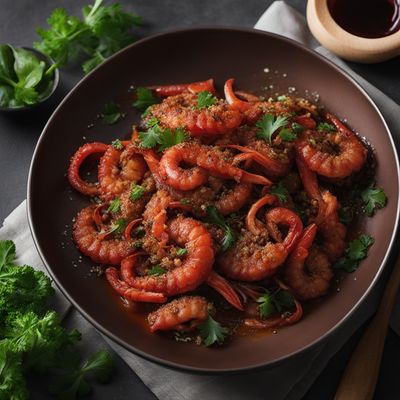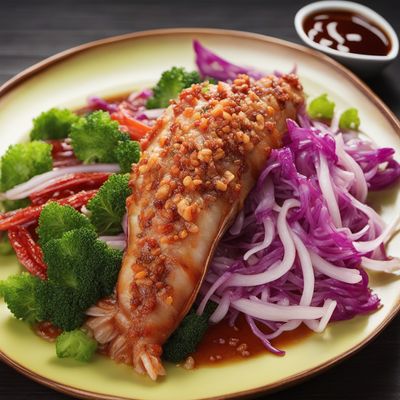
Ingredient
Squids
The Versatile Sea Creatures
Squids, also known as calamari, are cephalopods with a soft, cylindrical body and ten tentacles. They have a mild, slightly sweet flavor and a tender, chewy texture. Squids come in various sizes, ranging from small to large, and their appearance can vary from translucent to opaque white or pinkish color.
Origins and history
Squids have a long history in Mediterranean and Asian cuisines, where they have been enjoyed for centuries. They are commonly found in the coastal regions of these areas and have become an integral part of their culinary traditions. Squids are often associated with dishes like calamari, stir-fries, and seafood pasta.
Nutritional information
Squids are a low-calorie seafood option that is rich in protein, vitamins, and minerals. They are a good source of selenium, vitamin B12, and omega-3 fatty acids.
Allergens
Squids may cause allergic reactions in individuals with shellfish allergies.
How to select
When selecting squids, look for ones that have a firm texture, shiny skin, and a fresh, oceanic smell. Avoid squids with a slimy or fishy odor, as it may indicate spoilage. Fresh squids should have clear eyes and intact tentacles.
Storage recommendations
To maintain the freshness of squids, store them in a sealed container or a plastic bag in the refrigerator. They are best consumed within 1-2 days of purchase. To freeze squids, clean and pat them dry, then place them in an airtight container or freezer bag. They can be stored in the freezer for up to 3 months.
How to produce
Squids are typically caught in the wild, but they can also be farmed in controlled environments. To produce squids, you would need access to a suitable marine environment, such as a large tank or a pond, and a steady supply of live food for the squids to feed on.
Preparation tips
Squids can be prepared in various ways, including grilling, frying, sautéing, or even raw in dishes like sushi. To tenderize squids, they can be marinated in acidic ingredients like lemon juice or buttermilk. They are commonly used in dishes like calamari rings, seafood stews, stir-fries, and pasta sauces.
Substitutions
Octopus, cuttlefish, or shrimp can be used as substitutes for squids, although they may have slightly different flavors and textures.
Culinary uses
Squids are widely used in Mediterranean and Asian cuisines. They are commonly found in dishes like calamari fritti, squid ink pasta, stir-fried squid with vegetables, and seafood paella.
Availability
Squids are commonly available in coastal regions around the world, including the Mediterranean, Southeast Asia, and parts of North America.
More ingredients from this category
Recipes using Squids » Browse all

Devon-style Grilled Squid Nigiri
Seaside Delight: Grilled Squid Nigiri with a Devon Twist

Molecular Gastronomy Bouillabaisse
The Art of Bouillabaisse Reinvented: A Molecular Gastronomy Twist

Chipirones en su tinta
Inky Delights: Spanish-style Stuffed Baby Squid

Crispy Squid Rings with Spicy Mint Chutney
Squid Delight: Crispy Rings with a Pakistani Twist

Pashtun-style Stuffed Squid
Squid Delight: Pashtun-inspired Stuffed Seafood

Liaoning-style Stuffed Squid
Squid Delight: Liaoning-style Stuffed Suppions

Ika Nigiri Sushi
Ocean Delight Nigiri Sushi

Bengali-style Sotong Kangkung Curry
Spicy Seafood and Water Spinach Curry - A Bengali Delight

Stuffed Calamari with Italian Flair
Squid Delight: Italian Stuffed Calamari

Stuffed Squid with Omaha Flair
Savory Delight: Omaha-style Stuffed Squid

Luxembourgian-style Squid in Ink Sauce
Squid Delight: Ink Sauce Luxembourger Style

Squid Ink Eggs
Savory Delight: Squid Ink Eggs with a French Guianan Twist